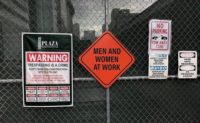
In the past few years, there’s been a welcome surge of efforts—many industry-led—to bring more women into construction careers. The energy is reminiscent of the late 1970s, when government policies brought me into an IBEW apprenticeship.
Still, according to federal 2020 demographic statistics for construction craftworkers, both women (4.0%) and Black Americans (7.0%) are notably far from achieving either a critical mass or representation that reasonably reflects their capabilities and workforce participation.
Our otherwise state-of-the-art industry lags well behind other occupational fields—and even the military.
Diversity, equity, and inclusion needs to be more than a slogan or a one-and-done effort. It should be understood and invested in as a complex, ambitious, multi-year project that begins with stark self-evaluation through the lens of workers the industry hopes to attract.
Imagine: rather than expecting underrepresented groups to fit into workplaces historically designed to exclude them—or, at best, designed without them—we pushed reset.
Imagine: workforce profiles based on actual current and future industry needs, not a past when—as old-timers would tell me—everything was done by hand and electric drills were heresy.
Imagine: starting today we reshaped the industry to one where on Day One, a diverse workforce would find a fair, inclusive workplace ready for success.
"Diversity, equity, and inclusion needs to be more than a slogan or a one-and-done effort. It should be ... invested in as a complex, ambitious, multi-year project that begins with stark self-evaluation through the lens of workers the industry needs to attract."
Forward Spin
Starting now, we need to :
First, pull together a result-oriented team with a range of skills and perspectives and charge it with planning, oversight, and course correction. The team should reflect the diversity of the country’s—not the industry’s—workforce, and have the support and ear of top labor and management leadership.
Key to include are women who have succeeded in the field and have site-specific expertise, with particular knowledge of landmines that can derail promising careers, and which need removal. Inclusion requires an all-in effort, but also needs direction and accountability.
Second, collect the right data to evaluate progress. Equal hourly pay is a start. Better measures are tracking and comparing annual pay, including overtime, and most telling—good years toward a pension, or other retirement options.
Entry-level numbers, of course, matter, but more significant is whether the capable entrant has advanced into a capable leader five to eight years later. Workforce percentages need to be tracked separately for those at entry, journey, and supervisory levels.
Unless the latter two groups are expanding, it’s a revolving door—not inclusion.
Next, invest in safety to support long-term careers for this highly skilled workforce, and to protect the industry’s investment in training.
This means not just PPE, equipment and tools sized to fit, but also on-the-job-training that’s ergonomically sound, not one-size-fits-all, and instructors capable of teaching a diverse workforce. There is no one right way to get most jobs done. Many veteran tradeswomen develop similar injuries from years of doing their jobs like they were taught: incorrectly for their bodies.
Next, sexual harassment, assault and other workplace violence should be recognized as tactics to deprive people of their civil right to employment.
These actions are usually carried out with the expectation of immunity, due to the perpetrator’s personal connections or perceived higher current value as a worker. But where there is a commitment to inclusion, discrimination should be seen not only as a violation of the victim’s rights, but also as undermining workforce cohesion and the industry’s future.
Regulations and consequences need to be written into contractual language—and made clear to all at entry. A chain-of-command that encourages reporting no matter who is involved needs to be trustworthy.
Last, language—verbal and visual—sends a signal. Vestiges of the past that convey good construction careers as “men’s jobs” or as “white men’s jobs” need to be updated.
Terms like “man hours” can be easily replaced. Trade classroom instruction should not include sexist jokes. The company or union’s website should reflect a capable workforce that is diverse at all levels, and the policies that support that.
Health and other benefits and policies should reflect that women are central to the core workforce; that some members will get pregnant; and that all members have caretaking responsibilities.
There’s nothing wrong with inclusion being “under construction” if steady, intentional, full-speed-ahead progress is, in fact, under way.
Susan Eisenberg is a resident scholar at Brandeis University, where she directs its On Equal Terms Project. A retired electrician and IBEW member, she is the author of We’ll Call You If We Need You: Experiences of Women Working Construction (Cornell, 2018). Eisenberg can be reached at seis@brandeis.edu.




